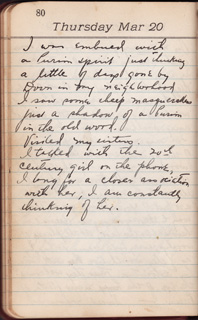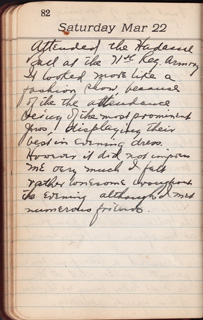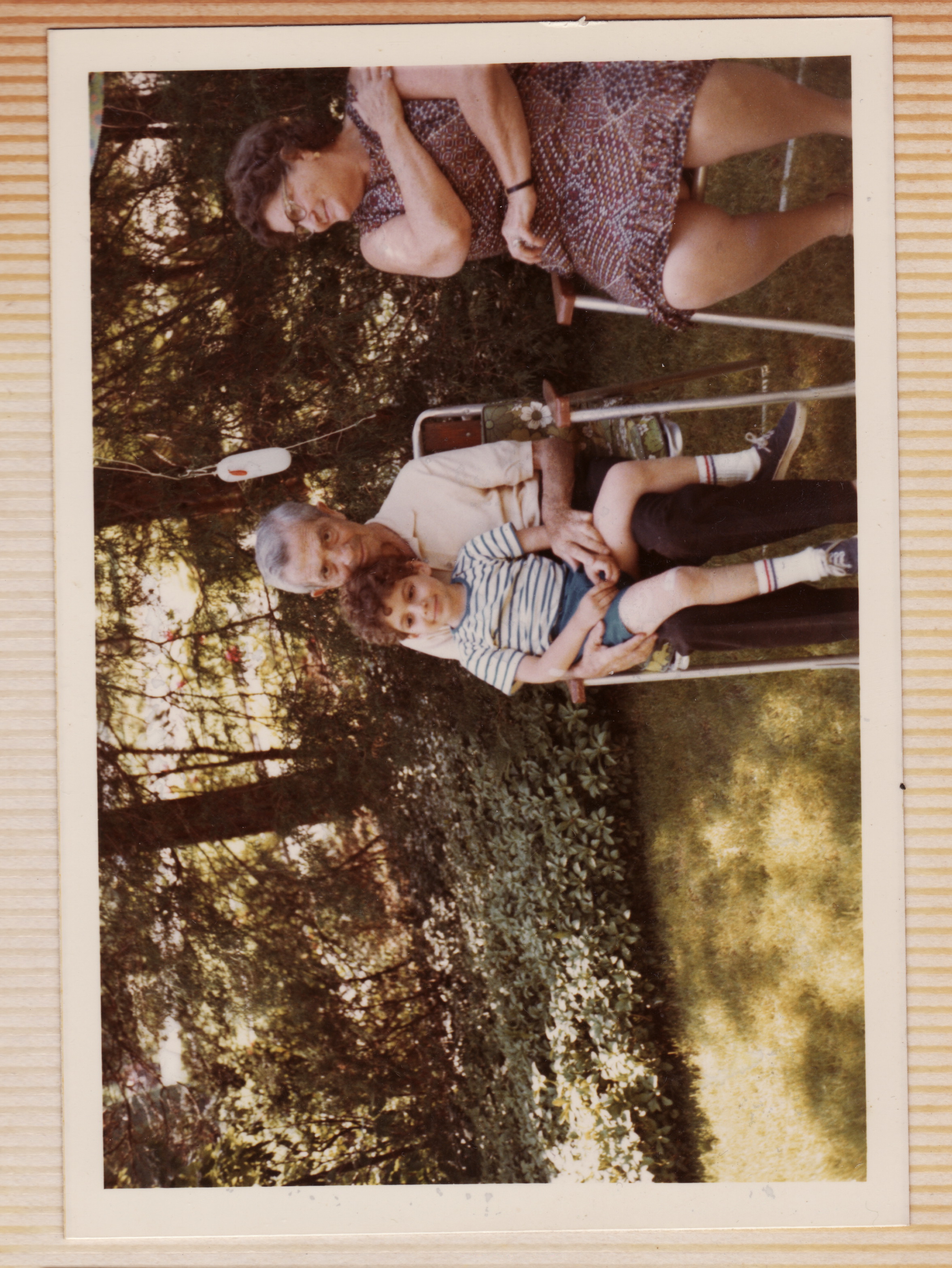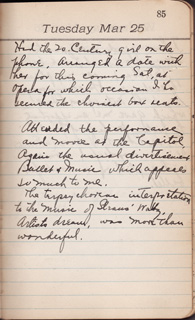
On my way from work I was
instinctively walked into a
synagogue to listen to the
Megilath Esther (The Book of Esther)
The house was crowded, everything
went along mechanically, without
any enthusiasm. —
In my mind is a picture
of the same scene in the old
world in my early childhood,
at sunset all stores are closed
All work has stopped, All streets
are full of young & old go on their
way to the synagogues dressed in
their Sabbath’s best, At the places of
worship, everybody seems so happy
as if they would live there with Esther
her adventure. Thus they welcomed
the eve. of the happ merry fiesta of
Purim. — Sweet memories.

——————
Matt’s Notes:
Purim is one of the more cheerful Jewish holidays, a celebration of how ancient Jews of the Persian Empire saved themselves from an evil royal minister who hoped to destroy them. The celebration involves dressing up like characters from the story, putting on plays, having parties and giving to charity. Papa grew up in a Jewish ghetto where Purim was probably the biggest festival of the year and gave everyone a breather from the trials of their daily lives, so it’s no wonder it meant so much to him.

When I read about his disappointment, I’m reminded of the scene in Midnight Cowboy in which John Voight arrives in New York, sure his cowboy look will make him a standout gigolo, only to see dozens of other cowboy gigolos wandering around. This might seem like an odd association, but I bring it up because New York can be unforgiving that way — huge, busy and hungry, the city is indifferent even to the things we find most significant. New York has never needed help from any holiday to feel colorful and hectic; perhaps that’s why, in Papa’s eyes, Purim felt less important when imported.
I should note that my wife, Stephanie, who spent her early childhood in an insular Orthodox community, remembers Purim as a big deal and has many happy memories of it. Perhaps the dilution of Purim Papa sensed was due to the diversity of his neighborhood (yes, it was very Jewish, but not entirely so, while my wife’s neighborhood was probably as culturally homogeneous as Papa’s home town). He might have enjoyed Purim more, too, if he’d had children to dress up and regale with the old stories; surely such holidays intensified his longing for a family of his own and contributed to his sense of disappointment.
In any event, the Yivo Institute for Jewish Research has a great Web site called “People of a Thousand Towns” with images of Eastern European Purim celebrations in the early 20th Century. I’ve written to Yivo with a request to use some of these images. Alas, I’m not sure I’m ever going to hear back from them The above and below photos of early 20th Century Eastern European Purim celebrations come from this collection and are published with their permission. Check out the site when you get a chance (registration required) but beware — you may lose a few hours paging through all the images.
—————
Update 3/19 –
My mother writes:
When I was growing up in Brooklyn, Purim was also a big deal. I remember one play in Hebrew school where I played Queen Vashti, the king’s petulant wife. Papa thought I was wonderful and raved about the way I tossed my head, but I’m sure he believed I should have been chosen for the part of Esther.
—————-
Additional references:
Here’s more on the story of Purim from jewfaq.org and Wikipedia .
———-
Update 3/22 –

——–

–











